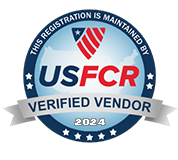La convergence tridimensionnelle : de quoi s'agit-il et pourquoi vous en avez besoin ?
15 mars 2022

Chaque seconde, 127 nouveaux appareils IoT se connectent à l'internet, d'après Magazine de la sécurité. Et c'est sans compter les appareils personnels comme les smartphones ou les tablettes. Le monde cyber-physique est là pour rester - et il apporte avec lui un vecteur d'attaque en constante expansion, que l'entreprise moderne doit essayer de protéger.
L'inaction n'est pas une option. Le résultat négatif impacts d'un incident de sécurité menacent la capacité de votre entreprise à fournir des biens et des services essentiels, à se maintenir à flot financièrement, à protéger la santé et la sécurité de ses employés et de ses visiteurs, et à conserver la confiance de ses clients. Avec des conséquences d'une telle portée découlant de vulnérabilités de sécurité de plus en plus multimodales, il est temps de prendre les choses en main dans toutes les directions.
Voyons comment la convergence peut vous aider à protéger votre entreprise - et pourquoi elle fonctionne mieux en trois dimensions.
La convergence est indispensable
La sécurité est l'affaire de tous, mais les cadres existants de gouvernance, d'atténuation des risques et de conformité (GRC) n'ont pas encore rattrapé leur retard. Ces cadres, rattachés à des départements individuels, ont tendance à exister indépendamment les uns des autres, ce qui présente en soi un risque pour la sécurité. Gartner a cité la tendance à la fermeture des silos de sécurité comme l'une des 9 principales tendances de l'année dernière en matière de sécurité, en raison d'une augmentation des incidents, des menaces et des divulgations de vulnérabilités en dehors des systèmes informatiques traditionnels de l'entreprise.
La convergence, quant à elle, fusionne les systèmes, les pratiques et les politiques afin que les services puissent fonctionner à partir de données partagées et coordonner les actions liées à l'application des politiques, à la prévention des risques et aux mesures de conformité.
Accédez à toutes les prestations.
Enquête Les participants ont identifié les 5 principaux avantages de la convergence :
- Meilleur alignement de la sécurité sur les objectifs de l'entreprise
- Amélioration de la communication et de la coopération
- Des pratiques et des objectifs communs à toutes les fonctions
- Un personnel plus polyvalent et plus équilibré
- Des opérations de sécurité plus efficaces

Ne faites pas cavalier seul - et ne convergez pas manuellement non plus
Si la plupart des professionnels reconnaissent la nécessité de réunir les différentes fonctions de sécurité au sein de leur entreprise, ils ne sont pas nécessairement passés à l'action.
Dans une enquête menée par la Fondation ASIS et sponsorisée par Alert Enterprise auprès de plus de 1 000 professionnels occupant des postes à responsabilité dans les domaines de la sécurité physique, de la cybersécurité, de la gestion des catastrophes, de la continuité des activités et autres domaines connexes, seuls 24% ont indiqué avoir fait converger les fonctions de sécurité physique et de cybersécurité. (Parmi ceux qui ont fait converger les deux, 96% ont toutefois déclaré avoir obtenu des résultats positifs).
Une partie du problème réside dans le fait que de nombreuses entreprises insistent encore pour intégrer leurs systèmes manuellement, ce qui équivaut à essayer de construire un smartphone en assemblant un téléavertisseur, un appareil photo et un téléphone à clapet. Mais avec le bon partenaire - et les bonnes intégrations - la convergence peut se produire sans qu'il soit nécessaire de procéder à un remplacement ou à un effort interne de type Promethean.
Le rendre tridimensionnel pour un maximum d'impact
Même si les dirigeants commencent à reconnaître la valeur de la convergence, ils n'obtiennent généralement qu'une visibilité à deux dimensions, plutôt qu'à trois. Pourquoi ? Parce qu'ils se concentrent sur l'intégration des fonctions de sécurité cybernétique et informatique en remplaçant les cadres de GRC historiquement isolés qui régissent les deux. Mais une approche réellement efficace nécessite une troisième dimension - l'inclusion de la GRC dans le domaine de la sécurité physique. En outre, en tant que sous-ensemble de l'aspect informatique de la convergence, les entreprises doivent s'assurer qu'elles intègrent activement la GRC des ressources humaines. Le département des ressources humaines héberge généralement les identités de la main-d'œuvre d'une entreprise et les données de base des employés, qui déterminent l'accès à l'espace de travail numérique et physique.
Une approche tridimensionnelle de la GRC réunit la GRC IT/HR (comme SAP), la GRC OT et la GRC physique pour créer une solution convergente permettant de coordonner les pratiques de détection et de réponse aux menaces dans l'ensemble de l'entreprise, quelle que soit sa taille ou sa complexité.
Réduire les silos, clarifier les divergences et créer une source unique de vérité
3D GRC offre à votre organisation la possibilité d'identifier et d'éliminer les failles de sécurité entre les systèmes physiques et numériques du personnel. À partir de là, vous pouvez créer une vue consolidée des identités du personnel, de la détection des menaces et des données liées à l'accès. Ainsi, en cas de problème, tout le monde travaille à partir des mêmes informations.
En revanche, lorsque différents cadres de GRC fonctionnent en silos, les départements sont plus susceptibles de déployer des solutions mal alignées parce qu'ils n'ont qu'une perspective fragmentée du problème. La GRC 3D peut aider votre organisation à identifier plus rapidement les causes profondes et à agir de concert pour atténuer les risques potentiels.
Résoudre plus de problèmes professionnels - ensemble
L'élimination des silos et le renforcement de la posture de sécurité de votre entreprise ne sont que le début de ce que vous pouvez réaliser avec 3D GRC. Lorsque les trois fonctions sont réunies, il devient beaucoup plus facile de relever les défis urgents de l'entreprise. Voici quelques exemples :
- Automatiser l'accès des employés aux espaces de travail numériques et physiques conformément aux réglementations et à la politique de l'entreprise - de l'embauche à la retraite
- Accélérer et rationaliser l'intégration et la désintoxication de tous les employés (y compris les contractants)
- Donner aux employés des solutions d'auto-attestation afin de réduire la charge de travail de la sécurité physique et de l'informatique.
- Économie sur les factures grâce à un suivi précis des entrées et sorties des contractants sur le terrain
- Numérisation des procédures de sécurité et automatisation de l'authentification des visiteurs pour plus d'efficacité






